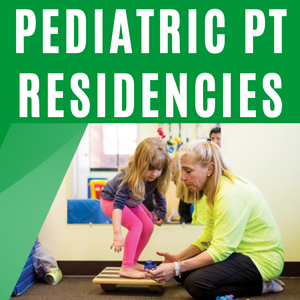Back
A Case Report: Physical Therapy Management of an Infant with Congenital Muscular Torticollis and Cerebral Palsy

Frances Baratta-Ziska, PT, DPT, MS, PCS, C/NDT
Clinical Lead
Hospital for Special Surgery
Brooklyn, New York, United States- MO
Magdalena Oledzka, PT, PhD, DPT, PCS
Clinical Lead
Hospital for Special Surgery
NYC, New York, United States
Background & Purpose: To present the outcome measures used to assess body structure and function, activity, and participation levels for this child with a referral for treatment of torticollis using the American Physical Therapy Association Clinical Practice Guideline for CMT (APTA CPG CMT). To present the clinical reasoning supporting the APTA CPG CMT action statements 4 to document infant history and 5 to screen infants for non-muscular causes of asymmetry and conditions associated with CMT. In support of APTA CPG CMT action statement 6, this child was referred from the physical therapist to a physician based on a PT assessment. To present the clinical decision-making rationale involved in managing this complex case. To present the PT plan of care as there is little to no information in the literature about PT for children with torticollis, seizures, and cerebral palsy (CP).
Case Description: A 4-month-old infant boy was referred by the pediatrician for PT evaluation and treatment with the diagnosis of torticollis. He had an extensive past medical and surgical history including hospitalizations due to seizures, shunt placement, and shunt revisions. It was evident at the initial PT evaluation that along with the referring diagnosis of torticollis, he also presented with severe plagiocephaly and developmental delays in fine and gross motor skill sets. The clinical management of this infant included the application of the APTA CPG CMT, and assessment using the World Health Organization family and patient-centered framework for body structure and function, activity, and participation levels. The WHO-ICF was used as a guide for PT evaluation, therapeutic interventions, and outcome measures. Evaluation & therapeutic interventions were selected within a body, structure, developmental and functional context. The infant's outpatient PT episode of care was complicated by re-hospitalizations due to shunt failure, shunt revision, and seizures.
Outcomes: Despite a diagnosis of torticollis, seizures, and CP, body structure, developmental and functional improvements were attained as assessed by APTA CPG CMT and outcome measures that are valid for children with disabilities. This child who presents with a diagnosis of torticollis, seizures and cerebral palsy has achieved age-appropriate gross motor skills up to and including walking without assistance.
Discussion: Physical therapy management in the complex case of a child with torticollis, seizures, and CP will necessitate modifications in applying the APTA CPG CMT. Outcome measures that are valid and address function, activity, and participation levels are necessary when working with complex presentations of infants with a primary diagnosis of torticollis. There is little to no information in the literature about PT management for children with torticollis, seizures, and cerebral palsy. This case presentation reports the clinical reasoning during the PT evaluation/reassessments, treatment interventions, and outcome measures used to assess the child as an infant, toddler, and young child.
Case Description: A 4-month-old infant boy was referred by the pediatrician for PT evaluation and treatment with the diagnosis of torticollis. He had an extensive past medical and surgical history including hospitalizations due to seizures, shunt placement, and shunt revisions. It was evident at the initial PT evaluation that along with the referring diagnosis of torticollis, he also presented with severe plagiocephaly and developmental delays in fine and gross motor skill sets. The clinical management of this infant included the application of the APTA CPG CMT, and assessment using the World Health Organization family and patient-centered framework for body structure and function, activity, and participation levels. The WHO-ICF was used as a guide for PT evaluation, therapeutic interventions, and outcome measures. Evaluation & therapeutic interventions were selected within a body, structure, developmental and functional context. The infant's outpatient PT episode of care was complicated by re-hospitalizations due to shunt failure, shunt revision, and seizures.
Outcomes: Despite a diagnosis of torticollis, seizures, and CP, body structure, developmental and functional improvements were attained as assessed by APTA CPG CMT and outcome measures that are valid for children with disabilities. This child who presents with a diagnosis of torticollis, seizures and cerebral palsy has achieved age-appropriate gross motor skills up to and including walking without assistance.
Discussion: Physical therapy management in the complex case of a child with torticollis, seizures, and CP will necessitate modifications in applying the APTA CPG CMT. Outcome measures that are valid and address function, activity, and participation levels are necessary when working with complex presentations of infants with a primary diagnosis of torticollis. There is little to no information in the literature about PT management for children with torticollis, seizures, and cerebral palsy. This case presentation reports the clinical reasoning during the PT evaluation/reassessments, treatment interventions, and outcome measures used to assess the child as an infant, toddler, and young child.

.png)
.png)
.jpg)
.png)
.png)
.png)
